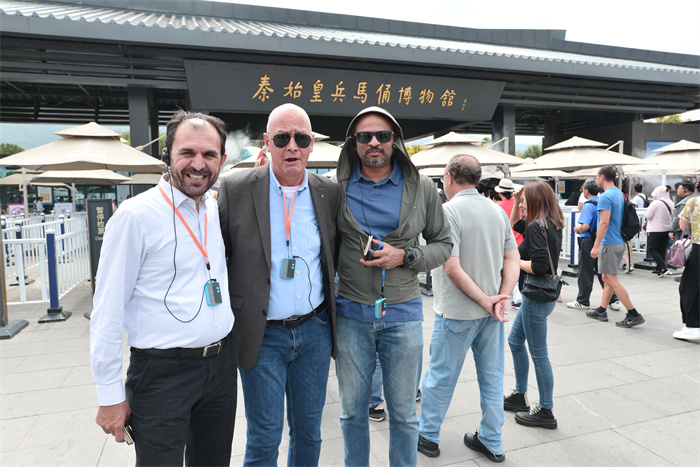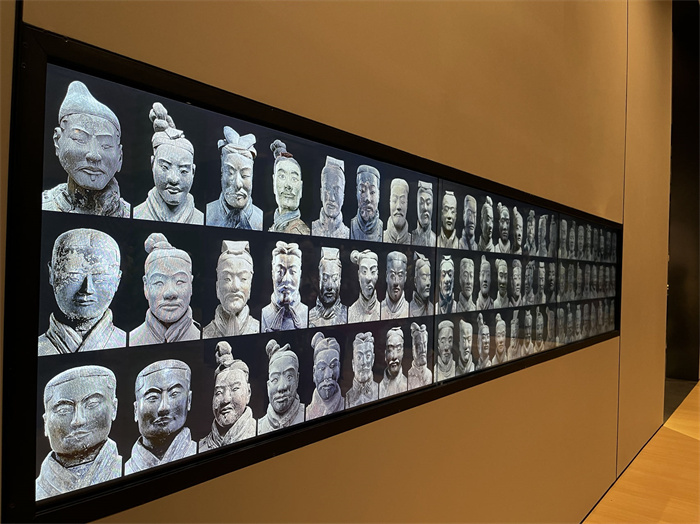A vibrant city on ancient Silk Road: Xi'an through the eyes of Pakistani journalist
by Liao Yifan
Xi'an, Sept 22 (China Economic Net) - A team of representatives from several prominent international media outlets visited Xi'an, the capital of Shaanxi province in Northwest China, on September 10.
"It's truly a wonder of the world and a fitting tribute to the heroes of ancient China. It stands as a testament to the multi-civilizational exchanges throughout human history," said Naveed Hussain, editor-in-chief of the Express Tribune and a member of the delegation, as he marveled at the Terracotta Warriors.

A team of representatives from several prominent international media outlets visit Terracotta Warriors in Xi'an, the capital of Shaanxi province. (Photo provided by Xinhua)
In 1974, an archaeological team began excavating Pit No. 1 of Emperor Qin Shi Huang's mausoleum, the first emperor of the Qin Dynasty, in Xi'an. The excavation revealed a vast underground army of life-size Terracotta Warriors, created to accompany the emperor in the afterlife.
Talking about archaeological discoveries, Naveed informed China Economic Net that he learned Chinese archaeologists have applied their expertise in Central, West, and South Asia over the past decade to assist in the protection of these sites.
"This is my first visit to the city. China's cultural confidence is evident in Xi'an. China and Pakistan are collaborating in numerous ways. I believe archaeological discoveries could be one area of cooperation, and Pakistan can benefit from Chinese expertise," said Naveed.

A screen show different figure heads are pictured during an exhibition commemorating the 50th anniversary of the discovery and excavation of the iconic Terracotta Warriors at the Emperor Qinshihuang's Mausoleum Site Museum in Xi'an, capital of northwest China's Shaanxi Province, Sept. 8, 2024. (Photo provided by Xinhua)
The delegation also visited an exhibition commemorating the 50th anniversary of the discovery and excavation of the Terracotta Warriors.
Naveed was interested in how to preserve the color and integrity of these artifacts during the excavation process. "In recent years, Chinese and foreign researchers have been collaborating to uncover how ancient craftsmen composed, layered, and applied color to the artworks, as well as to determine how to protect cultural relics that are highly sensitive to environmental factors, Feng Guo, a senior journalist from the China Economic Information Service who is passionate about Chinese culture.
"In 2023, China and Pakistan launched the Guardians of Gandhara project to support Pakistan in site maintenance, the protection of cultural relics, education on indigenous heritage, and archaeological collaboration. I believe this initiative reflects the spirit of the Silk Road, which embodies cooperation, openness, inclusiveness, mutual learning, and mutual benefit," Naveed told China Economic Net.
The museum has receivedover 160 million visitors since its establishment 45 years ago, including more than 11 million last year. "I believe it offers a new perspective on the vibrant culture of ancient China. We also possess a rich cultural heritage, geographical diversity, and a deep history, and we hope that more Chinese tourists will come to visit Pakistan in the future."
(Editor: fubo )


